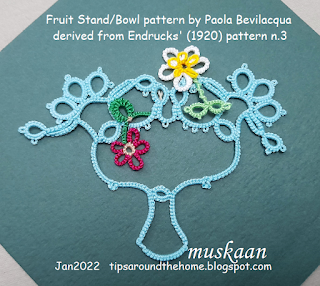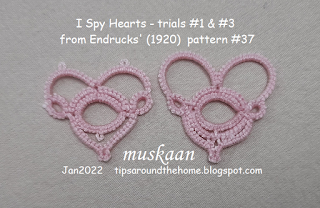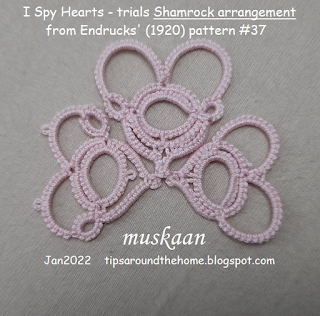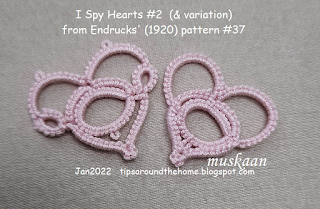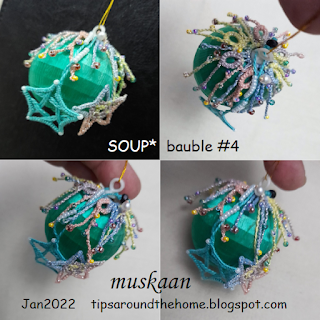Pin It now!
I shouldn't, but I am! Yeah, I should've been working on my numerous commitments, but these hearts were calling to me and I am taking life easy and don't want to regret my actions/inactions. Being tiny, they kind of fit into my Life Interrupted, so there!
1 & 2 were what I shared yesterday -
https://tipsaroundthehome.blogspot.com/2022/01/hearty-round-robin.html and they needed improvement. Enter trials 3 & 4 respectively.
I tried 2 things together. One was to make asymmetrical split rings (thanks,
AlenAlea Rako), and the other was adding another row of chains below. I also added more joining picots for stability.
Forgot to include this yesterday. The encircled portion is the heart I am trying to make. Notice how it is much broader here than in my free-standing ones? I tried to mimic the count for the most part in my first trials. But it is the pull from the rest of the round(s) that creates this stretched shape. Perle cotton versus mercerised cotton could also be playing a small part.
Here are the old and new versions together. Is there any improvement? I'm not so sure. And because I added a stabilizing picot for the long chains, the arch is higher than wider, changing the overall outline.
Picots are missing because I wasn't sure of the new count, but I think addition of decorative picots would certainly lift it up.
Here the picots definitely perk things up! I even considered a Josephine Ring on the inner chain but Mickey Mouse came to mind.
TWoT Notes: Interestingly, of the 4 hearts, 3 follow a different sequence/path! It helps to tat in multiples - each time you get a clearer picture, you focus on subsequent or peripheral aspects, .... and small pieces are just right to tat multiple times, LOL.
So, dear tatters, what's your opinion and feedback? Which patterns should I share?
